Elizabeth Calleja, Senior Advisor, Physical Activity. National Heart Foundation of Australia.
The heart is one of the most vital organs in the body, responsible for its ability to pump blood around the body to deliver oxygen and vital nutrients to our organs and cells. The cardiovascular system can support our heart to pump over 5 litres a minute at rest, and up to 35 litres per minute for an elite athlete during exercise.
Our heart health is essential for wellbeing and quality of life. However, with an increase in sedentary lifestyles, only 15% of Australians are meeting the Australian Physical Activity guidelines. Physical inactivity contributes to the the burden of heart disease in Australia, with one person experiencing a heart event every 12 minutes.
One of the most effective ways to promote and improve heart health is through regular exercise. Cycling is an accessible and enjoyable way of achieving regular physical activity and can provide many physical, mental and social benefits.
Exercise and Heart Health
Evidence shows that physical activity is one of the most effective ways to reduce our heart disease risk. Regular physical activity contributes to a healthier heart in several ways:
- Improved cardiovascular fitness: engaging in aerobic exercises like cycling helps enhance cardiovascular fitness. It strengthens the heart muscle, enabling it to pump blood more efficiently, improves lung capacity and muscle cell function, to support our bodies to stay healthy and reduce the risk of chronic disease. Research has shown that the more exercise we do, the better it is for heart and overall health. People who achieve the recommended dose of exercise of 150–300 minutes of moderate to vigorous exercise per week have improved heart health, and can reduce their risk of heart disease by up to 35%
- Lowering blood pressure: there is a clear link between high blood pressure and an increased risk of heart disease, in particular having a heart attack or stroke. A regular dose of exercise can help lower blood pressure, reducing the strain on the heart and decreasing the risk of heart disease.
- Improved cholesterol levels: regular physical activity such as cycling can help to improve your cholesterol levels. Combined with a healthy eating pattern, regular moderate intensity exercise can help improve your good cholesterol levels (HDL), lower your bad cholesterol (LDL) and improve your total cholesterol levels.
- Enhanced blood sugar control: exercise can improve the body’s ability to regular the response to the food that we eat. Regular exercise, including strength training, can improve insulin sensitivity and regulate blood sugar levels, reducing the risk and supports the management of type 2 diabetes, which is a significant contributor to heart disease.
- Weight management: being above a healthy weight is a risk factor for heart disease. Regular physical activity, combined with a heart healthy diet can help support achieve and maintain a healthy weight, which reduces the risk of developing heart disease and other chronic diseases such as type 2 diabetes. Stress reduction and improved mood: exercise is effective in the management of stress and can support people with mental health concerns such as depression and anxiety. Long term stress can have a negative impact on heart health. These can lead to increased stress hormones, known as catecholamines, which can increase blood cholesterol levels and blood pressure resulting in increased stress on the heart. The good news is that regular movement and physical activity can improve mental well-being, cognitive health and reduce these stress hormones, in turn helping improve mood, support improved memory and concentration, and can maintain our cognitive function as we age.
Cycling for Heart Health
Cycling is a fantastic mode of exercise that can have a plethora of health benefits to positive heart health. These include:
- Improved endurance: regular cycling helps build cardiovascular endurance, increasing the heart’s capacity to deliver oxygen to the body’s tissues, and increases the muscle cells to utilise this oxygen. This enables the body to maintain activity for long periods of time.
- Great for all abilities across the lifespan: from beginners to elite athletes, cycling can support people of all ages and abilities. Cycling can be done as a leisurely activity, as a mode of transport, through to competitive sporting endeavours. It is a great low impact for beginners, can be a great mode of exercise to provide a variety of skill level, from beginners to seasoned athletes.
- Low-impact exercise: cycling is a low-impact activity that places minimal stress on the joints. This makes it an excellent choice for individuals of all ages, including those with joint issues, to engage in regular exercise without undue strain on their bodies.
- Maintaining and achieving a healthy weight: Cycling is an effective for energy expenditure, is low impact and an effective endurance exercise that can help support weight management.
- Social connection: cycling can be a social activity, whether through group rides or cycling clubs. Social connections and support networks are known to have a positive impact on heart health by reducing stress and promoting a sense of belonging.
- Active transport: choosing cycling as a mode of transportation for daily commutes not only promotes heart health, but can also reduce traffic congestion and carbon emissions as well as being great for the economy. Many Australians struggle to find the time to participate in regular physical activity. Active travel can be an efficient means of incorporating physical activity into daily living through commuting, working, learning and socialising.
Cycling is both a pleasurable and beneficial form of physical activity. It not only improves our heart health, but can also contribute to a more sustainable and environmentally conscious society. Whether touring your local neighborhood, on your commute to work, or cycling mountain ranges on a long ride, cycling offers health benefits that can contribute to overall well-being and improved quality of life. So enjoy your ride and all of the wonders that it can bring you.



